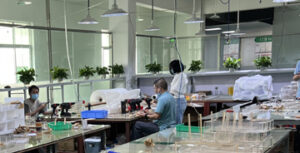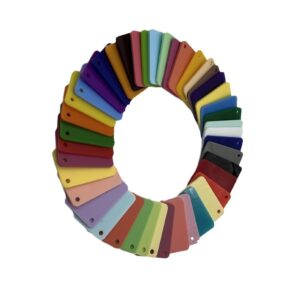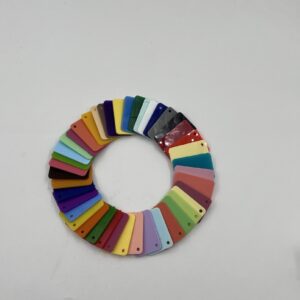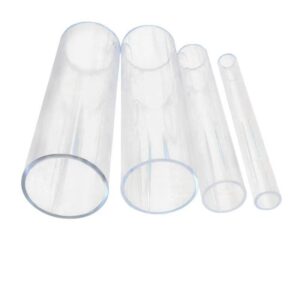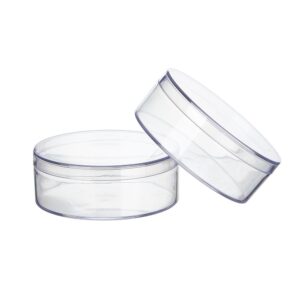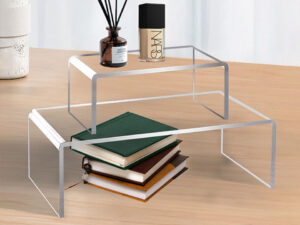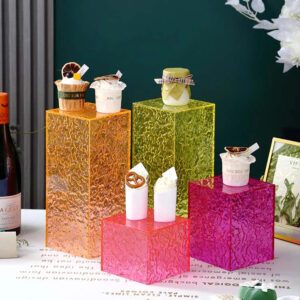Summary
Acrylic thickness is a crucial consideration in the design and construction of boxes and various display cases, significantly influencing durability, aesthetics, and functionality. Acrylic, or PMMA (polymethyl methacrylate), is a lightweight, transparent plastic known for its high impact resistance, optical clarity, and versatility, making it a preferred alternative to glass in numerous applications, from signage to furniture. As the demand for acrylic products continues to rise, understanding the appropriate thickness for specific applications becomes increasingly important to ensure structural integrity and user safety.
Choosing the right acrylic thickness involves evaluating several factors, including the intended use, environmental conditions, budget constraints, and safety requirements. Thicker acrylic sheets typically provide greater durability and resistance to impacts, making them suitable for high-traffic areas or applications requiring enhanced protection, such as security barriers. Conversely, thinner sheets can be adequate for lightweight applications, such as photo frames and indoor displays. Balancing these considerations is essential for optimizing performance while managing costs, as thicker sheets generally incur higher production expenses.
Controversies surrounding acrylic thickness often revolve around safety concerns and the impact of environmental factors on material performance. Insufficiently thick acrylic can lead to instability or breakage, posing risks in applications where user interaction is involved. Furthermore, exposure to extreme temperatures and chemicals can affect the longevity and structural integrity of acrylic products, necessitating careful selection based on specific environmental conditions. By understanding these complexities, users can make informed decisions that ensure both functionality and aesthetic appeal in their acrylic projects.
In summary, selecting the right acrylic thickness is a critical step in maximizing the effectiveness of acrylic boxes and displays. It requires a careful assessment of various factors, including the application’s demands and environmental considerations, while also addressing safety and budgetary concerns. This informed approach ultimately leads to better outcomes in both design and usability.
Table of Contents
Properties of Acrylic
Acrylic, commonly referred to as PMMA (polymethyl methacrylate), is a transparent plastic material that is highly valued for its remarkable strength, stiffness, and optical clarity. Its outstanding features make it a popular alternative to glass, as it is lightweight, impact-resistant, and has a high degree of durability. The versatility of acrylic allows it to be easily cut, colored, and molded, making it suitable for a wide range of applications including signs, displays, windows, and shelving.
Mechanical Properties
Durability and Impact Resistance
Acrylic sheets are known for their exceptional durability and shatter resistance, which makes them safer and longer-lasting compared to glass. Their impact resistance varies with thickness; for instance, a 5mm sheet can absorb significantly more impact energy than a thinner 2mm sheet, while a 10mm sheet can withstand substantial impacts without damage. This property is particularly beneficial in high-traffic areas or environments where safety is a concern.
Weight and Handling
One of the significant advantages of acrylic is its lightweight nature, which allows for easier handling and installation compared to heavier materials like glass or metal. This characteristic is particularly important for DIY projects, as it facilitates the creation of custom furniture, decorative fixtures, and storage solutions.
Optical Properties
Clarity and Transparency
Acrylic sheets offer high optical clarity, allowing between 92% and 98% of light to pass through, depending on the thickness. This transparency makes acrylic an excellent choice for applications that require clear visibility, such as display cases and protective screens. However, it is crucial to consider the thickness, as thinner sheets may induce poor optical distortion, while thicker sheets maintain better clarity and strength.
UV Resistance
Acrylic exhibits excellent resistance to UV radiation, preventing yellowing or fading over time when exposed to sunlight. Unlike many other materials, acrylic actively diffuses UV rays, minimizing the risk of injury from reflections or overheating. This quality makes acrylic a preferred option for outdoor applications, where prolonged sun exposure can be a concern.
Environmental Considerations
Acrylic is not only recyclable but also offers sustainability benefits, aligning with growing environmental consciousness. Its ease of fabrication and bonding with adhesives further contributes to its appeal, making it a favored choice among hobbyists and professionals alike.

Factors to Consider When Choosing Acrylic Thickness
When selecting the appropriate thickness of acrylic for boxes, several key factors must be taken into account to ensure the optimal performance and durability of the application.
Purpose of the Project
The intended use of the acrylic box significantly influences thickness selection. Thinner acrylic sheets are suitable for lightweight applications such as photo frames or display cases that do not require extensive structural support. Conversely, thicker acrylic is essential for applications demanding higher durability and protection, such as security barriers or storage containers for valuable items.
Environmental Conditions
The environment in which the acrylic boxes will be placed is another critical factor. Acrylic exhibits varying levels of impact resistance depending on its thickness; thicker sheets generally provide better impact resistance, making them more suitable for high-traffic areas or environments where the boxes might be subjected to stress or physical impact. Additionally, factors such as temperature fluctuations and exposure to chemicals should be considered, as they can affect the longevity and structural integrity of the acrylic material.
Budget Considerations
Budget constraints play a vital role in the selection of acrylic thickness. Thicker acrylic sheets are typically more expensive, so it’s important to balance the need for durability with financial considerations. Evaluating the specific requirements of the project can help in choosing an acrylic thickness that meets both functional and budgetary needs without compromising on quality.
Safety and Structural Integrity
Safety is a paramount concern when choosing acrylic thickness, especially for applications involving user interaction. Selecting an insufficient thickness may lead to instability or breakage, posing risks to users. Thus, adhering to recommended thickness guidelines is crucial for enhancing user protection and ensuring structural integrity.
By carefully evaluating these factors, individuals can make informed decisions about the right acrylic thickness for their specific projects, ensuring a balance between functionality, durability, and cost-effectiveness.

Standard Thickness Options
Acrylic sheets are available in a range of thicknesses, each suited for different applications based on factors such as strength, flexibility, and weight requirements. Understanding these thickness options is crucial for selecting the right material for specific projects, especially in the context of packaging and display design.
Common Thickness Measurements
Acrylic sheets typically range in thickness from $1/16$ inch (1.5 mm) to 4 inches (100 mm) or more. The choice of thickness directly affects the material’s rigidity and durability.
- $1/16$ inch (1.5 mm)
- $1/8$ inch (3 mm)
- $3/16$ inch (4.5 mm)
- $1/4$ inch (6 mm)
- $3/8$ inch (9.5 mm)
- $1/2$ inch (12 mm)
- $3/4$ inch (18 mm)
- 1 inch (25 mm) and above for specialty uses
Application-Specific Recommendations
Lightweight Displays
For lightweight indoor displays, thicknesses of 2 mm to 3 mm are often sufficient, providing adequate clarity and ease of handling while minimizing material costs. This range is typically suitable for applications such as picture frames and light signage.
Medium Displays
For medium-sized countertop displays (dimensions of 12-18 inches), acrylic sheets with a thickness of 4 mm to 5 mm are ideal. This thickness offers a balance of rigidity and cost, providing approximately 2.5 to 4 times the strength of 3 mm material while only increasing the cost by 60-80%.
Heavy-Duty Applications
For large countertop displays (18-24 inches), thicker acrylic sheets are necessary to support heavier items. Minimum thicknesses of 8 mm for vertical panels and 10-12 mm for shelving components are recommended to maintain structural integrity under sustained loading. Although these thicker sheets may increase material costs, they often eliminate the need for additional metal reinforcements, thereby reducing overall construction complexity.
Specialty Displays
Specific applications, such as jewelry and cosmetic displays, may prioritize optical clarity and aesthetic appeal over sheer load-bearing capacity. In such cases, thicknesses of 5-6 mm for smaller cases and 8 mm for larger implementations provide an optimal balance of clarity and security.

Manufacturing Considerations
When selecting acrylic thickness for boxes, several manufacturing considerations must be taken into account to ensure optimal performance and cost-effectiveness. These considerations include the choice of materials, cutting and machining techniques, and supplier selection.
Material Quality and Selection
The quality of acrylic material directly influences the finished product. Manufacturers must carefully select raw materials to maintain high standards in production. It’s important to note that while manufacturers strive for reliability in their recommendations, they do not guarantee outcomes due to the unpredictable nature of product use beyond their control. This underscores the necessity for users to understand the characteristics of different acrylic types, such as OPTIX and DURAPLEX, which may require specific fabrication techniques.
Cutting and Machining Techniques
Acrylic can be processed using various cutting and machining methods. For high-volume production, Table and Panel saws are recommended for making straight cuts, while Computer Numerically Controlled (CNC) routers and laser cutters are ideal for intricate designs and precise shapes. The use of tools specifically designed for cutting acrylic is critical to achieving a clean edge finish. Additionally, guidelines such as using sharp blades, controlling feed rates, and avoiding excessive heat during machining are crucial for maintaining quality.
Handling and Storage
Proper handling and storage of acrylic sheets are essential to prevent damage. Acrylic sheets are typically protected with a polyethylene film or paper masking, which should not be removed until fabrication begins. Care should be taken to avoid sliding sheets across surfaces where debris could scratch them. Furthermore, extreme temperature fluctuations can affect the material’s integrity, thus necessitating appropriate storage solutions like A-frames that allow the sheets to lean at an angle.
Supplier Selection
The choice of supplier can also impact manufacturing efficiency and costs. Domestic suppliers often offer advantages such as better quality control and communication but may charge higher prices due to increased labor costs. Conversely, overseas suppliers may provide lower prices but can complicate logistics and quality assurance. It is essential for manufacturers to weigh these factors when selecting a supplier to balance quality, cost, and responsiveness in production.
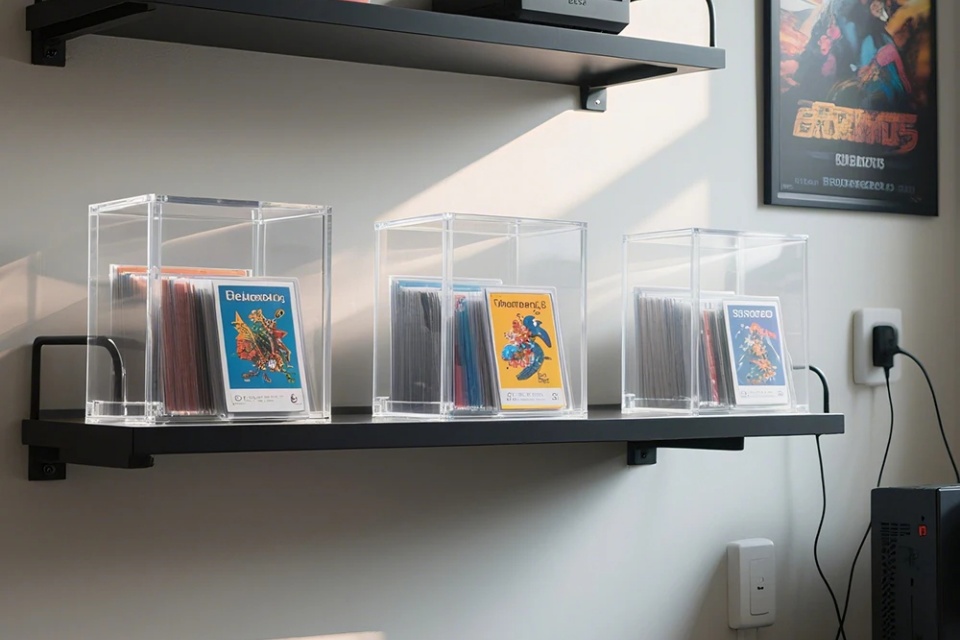
Cost Implications
The cost of acrylic sheets is influenced by several key factors, including thickness, size, complexity of design, and market conditions. Understanding these factors is essential for making informed decisions about the right acrylic thickness for boxes, especially when considering bulk orders.
Thickness and Cost
The thickness of acrylic sheets plays a significant role in both their cost and durability. Thicker sheets (e.g., 3mm, 5mm, 10mm) are generally stronger and more resistant to damage, but they also incur higher production costs. For instance, a 6mm sheet typically costs about twice as much as a 3mm sheet of equal dimensions but provides approximately eight times the rigidity, creating a favorable strength-to-cost ratio for many applications. Thicker materials, however, can add 10-30% to the cost per unit due to increased raw material and processing requirements.
Size and Complexity
The overall cost of producing acrylic display boxes is further influenced by their size and design complexity. Larger cases necessitate more acrylic material, which directly increases production costs. Additionally, larger items may be more challenging to handle during manufacturing, cutting, and assembly, leading to higher labor costs. Shipping expenses can also escalate for larger cases due to their weight and space requirements. On the contrary, smaller, standard-sized cases are often more economical to produce and ship in bulk, as they can be manufactured and packed more efficiently.
Customization and Market Conditions
Customization options, such as special cutting or surface treatments, can significantly impact the price of acrylic sheets. While customization can enhance value, it often leads to increased costs. Moreover, global market conditions, such as fluctuations in acrylic resin prices, seasonal demand, and changes in manufacturing costs, can all affect pricing. For example, during peak seasons, suppliers may raise prices due to heightened demand, whereas off-peak times may offer better deals.
Strategic Cost Management
To optimize costs when purchasing acrylic display boxes, several strategies can be employed. These include comparing quotes from multiple suppliers, opting for standard sizes and designs, and ordering in larger quantities to benefit from tiered pricing. Additionally, negotiating with suppliers for bulk orders can lead to discounts, while careful planning can help avoid rush orders that typically incur premium pricing. Ultimately, while it may be tempting to choose the cheapest options, investing in higher-quality materials can yield long-term savings by reducing the need for replacements or repairs.
By considering these cost implications and making strategic choices, buyers can effectively balance their budget with their needs, ensuring they select the most suitable acrylic thickness for their specific applications.
Maintenance and Care
Proper maintenance and care are essential for preserving the longevity and aesthetic quality of acrylic boxes. Various factors must be considered to ensure these products remain in optimal condition, especially given their sensitivity compared to other materials.
Cleaning Guidelines
To maintain acrylic boxes, regular cleaning is crucial. It is recommended to use mild soap solutions and soft, lint-free cloths for this purpose. Harsh chemicals, particularly ammonia-based cleaners or solvents, should be avoided as they can damage the surface of the acrylic. For routine maintenance, a mixture of lukewarm water and a small amount of dish soap is generally effective. After cleaning, rinsing the acrylic sheet with clean water and drying it with a soft cloth will help prevent water spots from forming.
Preventative Measures
To prevent scratches and other forms of damage, it is advisable to regularly dust the surface with a soft cloth and avoid placing sharp objects directly on acrylic sheets. When transporting or storing acrylic boxes, protective coverings should be used to minimize the risk of scratches or other damage that could affect their appearance and functionality.
UV Protection
Although acrylic sheets are inherently UV-resistant, prolonged exposure to direct sunlight can lead to slight yellowing or fading, particularly in colored sheets like neon. Therefore, when using acrylic products outdoors or in well-lit areas, applying a UV-protective coating or opting for sheets with built-in UV resistance can significantly prolong their life.
Scratch Removal
For minor scratches, specialized acrylic polish or plastic scratch removers can often be effective. Applying the polish with a clean, soft cloth and buffing in a circular motion can help diminish scratches. For deeper scratches, a more abrasive polish followed by a finer polish may be necessary to restore the surface.
Long-term Care
Regular inspection of acrylic boxes for signs of wear or damage is essential, especially in high-traffic areas or outdoor installations. Addressing minor issues promptly, such as fixing small scratches or reapplying adhesive, can help prevent them from becoming more significant problems. Additionally, using frames to support larger installations can provide stability and protection against environmental factors.
By following these maintenance and care guidelines, users can ensure that their acrylic boxes remain functional and visually appealing for an extended period.
Application Examples
Acrylic sheets are widely utilized across various industries and applications due to their versatility, strength, and aesthetic appeal. The choice of acrylic thickness plays a critical role in determining the suitability of the material for specific tasks. Below are some notable examples of applications where different acrylic thicknesses are used effectively.
Display Cases
One of the most common applications of acrylic is in display cases, which serve to showcase products while providing protection. For retail environments, the choice of acrylic thickness is crucial; thicker acrylics, such as $1/2$ inch (12 mm) or even $3/4$ inch (18 mm), are often employed to ensure structural integrity and prevent sagging under the weight of the displayed items. A case study highlighted that upgrading to 10 mm acrylic for shelving in a regional electronics retailer significantly increased load-bearing capacity, demonstrating the importance of selecting the right thickness.
Signage
Acrylic sheets are frequently used for signage, where both visibility and durability are essential. Options such as $1/4$ inch (6 mm) and $3/8$ inch (9.5 mm) thicknesses are typically favored for outdoor signs, providing a good balance of strength and transparency while withstanding various environmental factors, including wind and moisture. Framing these sheets can further enhance their stability, making them ideal for outdoor applications.
Furniture
In furniture design, acrylic is becoming increasingly popular for tabletops, shelving units, and decorative elements. Thicknesses of 1 inch (25 mm) or greater are often utilized for custom furniture pieces to ensure durability and support heavier loads. These thicker sheets also offer a polished finish, contributing to the aesthetic appeal of high-end furniture designs.
Protective Barriers
Thicker acrylic sheets, such as $1/2$ inch (12 mm) or $3/4$ inch (18 mm), are ideal for protective barriers and partitions in various settings, including offices and retail spaces. These thicknesses not only provide a robust physical barrier but also maintain a clear view, making them suitable for areas requiring visibility alongside protection.
Custom Projects
For specialized applications, such as art installations or custom retail displays, acrylic sheets can be employed in even greater thicknesses, up to 4 inches (100 mm). These sheets offer exceptional strength and visual impact, making them perfect for high-end installations where both functionality and aesthetics are critical. The choice of thickness directly influences the overall design and effectiveness of these custom projects, underscoring the importance of careful consideration during the selection process.


